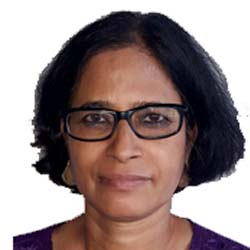Columns
Mandate for change in Sri Lanka
Managing state expenditures will likely help Dissanayake put the economy back on track.
Smruti S Pattanaik
The election for Sri Lanka’s executive presidency was held on September 21. As was widely expected, Anura Kumara Dissanayake from the Janatha Vimukthi Peramuna (JVP)—a part of the 20-group alliance National Peoples Power (NPP) coalition—was elected president. This was the first time in the country’s history that no candidate secured the mandatory 50 percent vote to get elected, requiring the counting of second preferential votes.
The two traditional political parties—the United National Party (UNP) and the Sri Lanka Freedom Party (SLFP)—have been extinct from electoral politics since the 2019 election. Two new parties—Sri Lanka Podujana Peramuna, led by the Rajapaksa family and Samagi Jana Balawegaya, led by Sajith Premadasa, had risen out of their ashes. The UNP chairman, Ranil Wickremesinghe, the sitting president who independently contested this election, lost the race. This was not the first time JVP contested the presidential election. Rohana Wijeweera, the influential leader of JVP who spearheaded the insurrection, had contested in the 1982 presidential election and received the third-largest votes. Anura Dissanayake contested the 2019 election but didn’t win, receiving only 3.2 percent of the votes. This election was truly historic due to the remarkable victory of JVP.
JVP’s past
The JVP has been in electoral politics since the late 1990s. It has a violent past as it was responsible for two insurrections—1971 and 1988—that were fiercely repressed by the Sri Lankan state, resulting in more than 30,000 deaths of its cadres. As a Marxist Leninist party, its politics are based on class struggle and found a niche in the late 1980s when it championed Sinhala nationalism as the country witnessed Tamil insurgency. The JVP later abandoned its revolutionary path and entered electoral politics. In 1994, it supported the left-leaning SLFP. In 2000, it supported Chandrika Kumaratunga’s People’s Alliance (PA) government from the outside.
The PA transformed into UPFA after it allied with the JVP, which won 38 seats in the parliament. However, this alliance did not sustain. The JVP pressurised Rajapaksa to ban the Liberation Tigers of Tamil (LTTE) and abandon the cease-fire brokered by the Norwegians and the peace process. The party forced him to find alternatives to sustain the majority in the parliament and reduce dependency on them as both contested to gratify the Sinhala Buddhist constituency. In 2008, the JVP split over the party’s support of the Rajapaksa regime.
Dissanayake as president
The JVP has come a long way since its revolutionary days. After the elimination of the LTTE, it diluted its Sinhala nationalist stance; nevertheless, it is opposed to any devolution of power to the Tamils under the 1987 Indo-Sri Lanka Accord, which it had bitterly opposed. This is one of the reasons why the Tamils mostly voted for Sajith Premadasa, as they were continuously suspicious of JVP. It was JVP that moved to the court in Sri Lanka against the merger of the northern and eastern provinces, which was a major demand of the Tamils and provided under the Indo-Sri Lanka Accord of 1987, leading to the demerger in 2007.
Notably, the JVP played an important role in rallying the working class and the poor when Sri Lanka declared bankruptcy to eventually force Gotabaya Rajapaksa out of the presidency in 2022. This protest, or Janatha Aragalaya, as it is popularly known, gave the JVP a popular boost as Dissanayake projected himself as an alternative to the tried and tested political parties. It made corruption its main plank in this election—an issue that aragalaya highlighted, apart from endearing the working class with his pro-poor promises.
The JVP’s election manifesto promised to investigate political killings, enforced disappearances and abductions and expand efforts of the Truth and Reconciliation Commission to address violence caused by racial and religious extremism. The manifesto of a ‘harmonious Sri Lankan nation’ without discrimination does not recognise the Tamil political demand. The call for ‘inclusivity’ remains a majoritarian project.
Election promises and economy
The abolition of the executive presidency has long been on the cards in Sri Lanka. In 2015, after Maithripala Sirisena became president and formed the National Unity Government with Ranil Wikremesinghe as Prime Minister, the president’s power was diluted and transferred to the Parliament, yet he remained powerful. During Gotabaya Rajapaksa’s short-lived regime, much of the powers divested from the president were restored through the 20th Amendment to the Constitution. So, it would be important to see the JVP’s approach to establishing parliamentary democracy.
The NPP’s manifesto promises to end pensions, special allowances and benefits for retired presidents and their spouses and abolish the 5-year pension and duty-free vehicle licenses for Members of Parliament, which the party thinks drain the national resources. It has also promised to keep the cabinet size to 25 ministers. But managing government expenditures and efficient tax administration will likely help President Dissanayake put the economy back on track.
Between January 2022 and September 2023, 535,000 Sri Lankans sought employment outside the country, and labour force participation was reduced due to the closure of micro, small and medium-sized enterprises (MSMEs). Expanding the domestic market to absorb the youth and increase productivity is a challenge. Government data shows that 49.6 percent of the labour force is engaged in the service sector, 25.4 percent in the agriculture sector and 25.0 percent in the industry sector. Inflation has reduced, but poverty has increased and the negative GDP is growing at the rate of 2.2 percent. Dissanayake’s populist slogan to tax the rich and reduce the economic burden caught the people's imagination, especially of the youth, who are tired of the traditional parties and their persisting corrupt ways.




 9.12°C Kathmandu
9.12°C Kathmandu













%20(1).jpg&w=300&height=200)

